Hungarian-American magician and escape artist Harry Houdini peformed an elaborate stage escape that involved him being buried alive in full view of the audience...
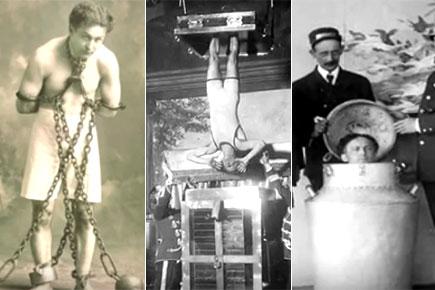
Harry Houdini
Hungarian-American magician and escape artist Harry Houdini peformed an elaborate stage escape that involved him being buried alive in full view of the audience. He escaped after being strapped in a straitjacket, sealed in a casket, and then buried in a large tank filled with sand. It took place on this day, October 24, 1926 and is considered the man's final performance as he died a week later on October 31 at the age of 52.
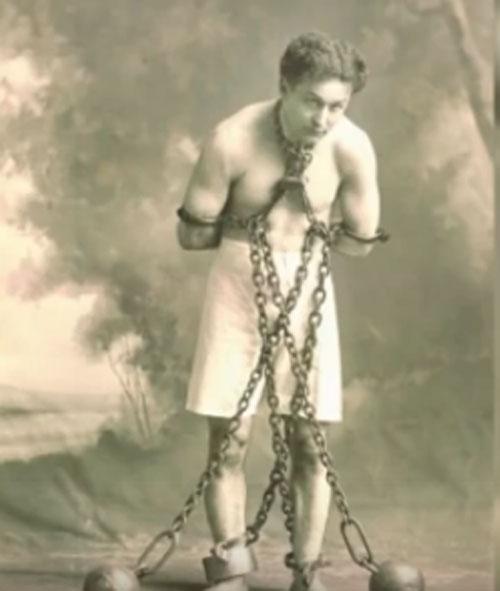
Harry Houdini in shackles before one of his performances. Pic/YouTube
To commemorate this occasion we look back at the illusionist and stunt performer's most notable public spectacles that both wowed and stumped audiences worldwide...
The Mirror Challenge
Date: March 17, 1904
Harry Houdini has gone on record several times during his life calling this the most difficult escape of his career. Houdini accepted the challenge made by a daily major London news publication to escape from special handcuffs that apparently took the maker, Nathaniel Hart, a locksmith from Birmingham, five years to make.
Houdini performed the stunt in the presence of a crowd of 4000 people, which included over 100 journalists at London's Hippodrome theater. It took him one hour and ten minutes to escape from the handcuffs.
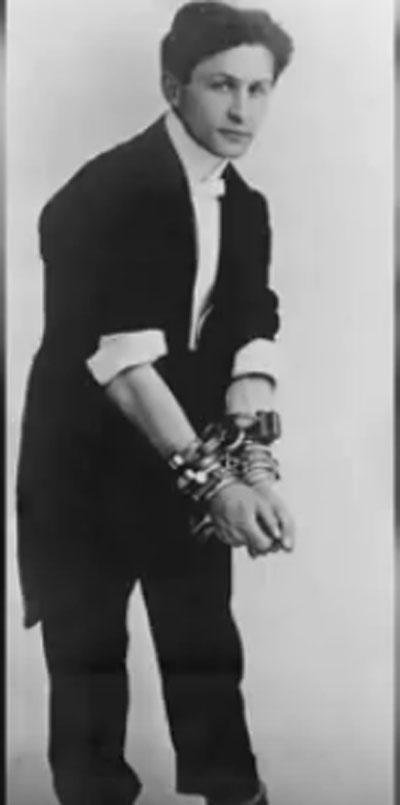
Harry Houdini handcuffed before the Mirror escape challenge. Pic/YouTube
During his escape attempt Houdini emerged from his "ghost house" (a small screen used to conceal the method of his escape) several times. He even asked a representative from the newspaper that had made the challenge to remove th cuffs temporarily so that he could take of his cout. After his request was denied the magician and escape artist took out a pen knife and cut off the coat from his body by holding the knife in his teeth. His wife even came out on stage during the 56 minute mark to give him a kiss. It has been suggested by many that Harry Houdini was bested that day and that his wife Bess helped him out by smuggling the key in a glass or water or in some cases in her mouth, which she gave to him through a kiss. However, these sources are biased.
A full-sized design of the same Mirror Handcuffs, as well as a replica of the Bramah style key for it, is on display to the public at the Houdini Museum in Scranton, Pennsylvania.
The milk can escape
Date: 1908
Considered his own original act, Harry Houdini made it a part of his regular act for the first four years since its inception. His brother Theodore Hardeen, continued to perform it in the 1940s.
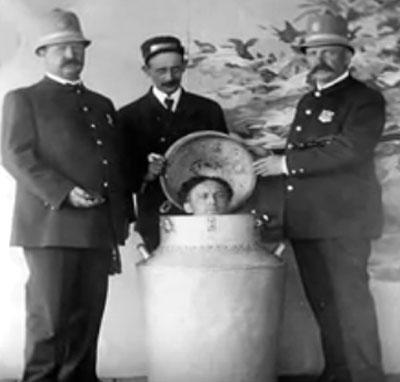
Harry Houdini getting locked inside the milk can. Pic/YouTube
The escape act involved Houdini handcuffed and sealed inside an over-sized milk can filled with water. He would then make his escape behind a curtain. The milk can was later locked inside a wooden chest, being chained or padlocked. This modification would stay in later years.
Houdini invited members of the audience to hold their breath along with him while he was inside the can. Advertised with dramatic posters that proclaimed "Failure Means A Drowning Death," the escape proved to be a sensation. The milk can and overboard box are now on display at the American Museum of Magic.
The Chinese water torture cell escape:
Date: September 21, 1912
Houdini replaced his popular milk can act with this to detract a vast number of imitators who had cropped up. His feet were locked in stocks, and he was lowered upside down into a tank filled with water, which was contained inside a mahogany and metal cell featuring a glass front. The cage prevented Houdini from turning and the metal bars offered protection should the front glass break.
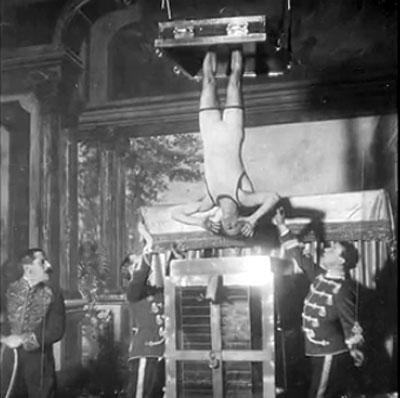
Houdini being lowered inside the Chinese water torture cell. Pic/YouTube
Harry Houdini always referred to the cell as 'the Upside Down' or USD even though it was advertised as 'The Chinese Water Torture Cell' or 'The Water Torture Cell,' and first performed it at the Circus Busch in Berlin, Germany. He would perform the escape until his death in 1926.
The suspended straitjacket escape
Date: Unknown
One of Houdini's most popular stunts, the magician would escape in full view of an assembled crowd after having himself strapped into a regulation straitjacket and suspended by his ankles from a tall building or crane. It took him 2 minutes and 37 seconds to complete the esacape. The film footage of this act has been preserved at the Library of Congress. Houdini's most famous performance of this escape act was at New York City where he was suspended wearing a straightjacket on a crane being used to build the New York subway.
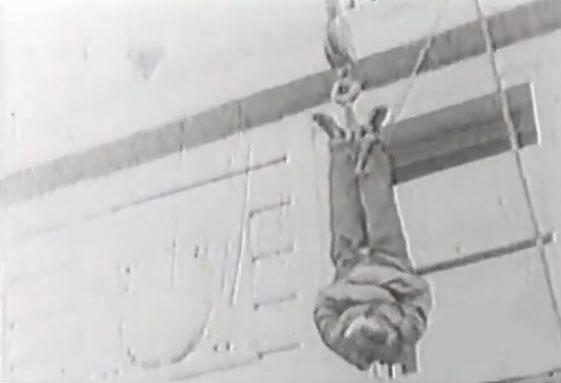
Harry Houdini suspended on a crane wearing a straitjacket. Pic/YouTube
In many cases, Houdini drew tens of thousands of onlookers who brought city traffic to a halt. He was apparently given the idea for the act by a young boy named Randolph Osborne Douglas, who he met during a performance at Sheffield's Empire Theatre.
The overhead box escape
Date: July 7, 1912
Harry Houdini completed this escape stunt in a record 57 seconds. It involved him escape from a nailed and roped packing crate after it had been lowered into water. He first performed it in in New York's East River and later most notably on stage, first at Hamerstein's Roof Garden where a 5,500-gallon (20,820 litres) tank was specially built, and later at the New York Hippodrome.
After being forbidden by the New York Police from using one of the piers, Houdini hired a tugboat with members of the press on board, who went on to witness him getting locked in handcuffs and leg-irons, then nailed into the crate which was roped and weighed down with two hundred pounds of lead. The crate was then lowered into the water. It was pulled to the surface and found still to be intact, with the manacles inside.
 Subscribe today by clicking the link and stay updated with the latest news!" Click here!
Subscribe today by clicking the link and stay updated with the latest news!" Click here!









